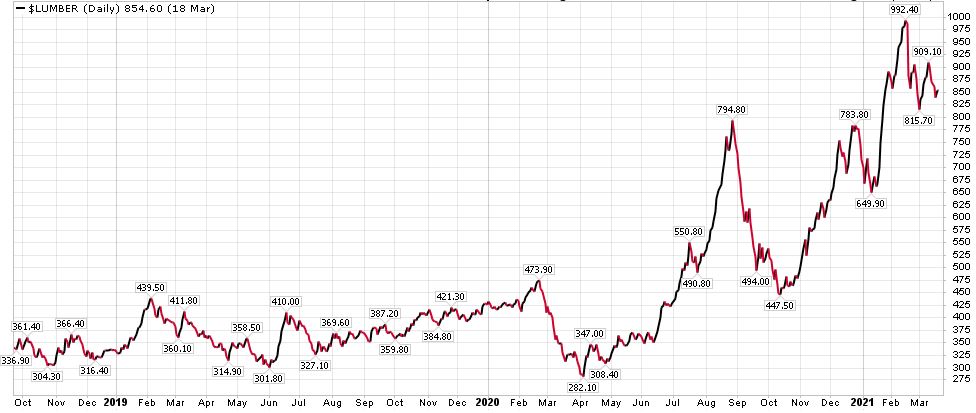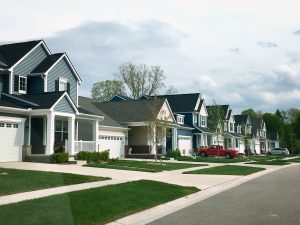When your homeowner’s insurance policy renews, there are a few factors to keep in mind about the replacement cost of your home.
First, you may see an increase in your replacement cost from your carrier this year. So, we are diving deeper into the reasons for the possible gains.
What is Replacement Cost for Homeowners Insurance?
A replacement cost is an estimate of the cost of rebuilding a new home of the same quality as your old one. The cost of replacing a home depends on several factors, including construction costs, square footage, and quality of materials used.
It’s important to understand that your home’s replacement cost is not the same as its market value. The market value of your home is its selling price. But this number incorporates more than just the value of the home itself. This includes the land it’s built on, any improvements made to the land, and transactional sales costs, such as the profit made on the sale.
The cost of building the home, the replacement cost, is just one factor contributing to the market value of a home.
Reasons for Possible Increases in the Replacement Cost of Your Home
From lumber to building materials, the cost of almost every item that goes into construction is soaring. One area that may not immediately come to mind is the impact of rising prices on a project’s insurance were Coverage.
Worldwide Pandemic Occurred
As we all know, March 2020 saw our world change with the start of the worldwide pandemic.
As COVID-19 spread across the United States, families were quarantined at home, and people worked remotely when possible. This was an opportune time to work on primary residences. People moved forward with do-it-yourself projects such as home improvements, additions, and deck renovations.
Sawmills Stopped Producing Lumber
While COVID-19 restrictions on businesses brought new remote working challenges and perhaps additional time for home improvement projects, many industries came to a grinding halt. Sawmills were among industries witnessing a standstill, stopping lumber production.
Classic Case of Supply-and-Demand
Lumber production stopped. But the demand for lumber didn’t. Homeowners forged ahead with their home improvement projects, purchasing lumber in large quantities. Since sawmills were closed, the wood supply dwindled.
This scenario continues today. According to Forbes, as of the week of March 11, 2021, the price of lumber is at an all-time high of $1,044. Lumber prices are also up 188% since the beginning of the pandemic. According to the National Association of Home Builders, the higher lumber prices have added at least $24,000 to the price of a typical new single-family home national National Association of Home Builders.
 Lumber prices, October 2018 – March 2021. Graph courtesy of StockCharts.com
Lumber prices, October 2018 – March 2021. Graph courtesy of StockCharts.com
New Home Sales Increased in 2020 as Compared to 2019
Even though Americans faced pandemic lockdowns, new home sales increased tremendously in 2020 compared to 2019.
According to the National Association of Home Builders, new home sales in 2020 saw an 18.8 percent gain compared to 2019. The median home sales price in 2019 was $329,500. In 2020, the median home sales price was $355,900.
“While the market remains solid, median home prices are increasing due to higher building material costs, most notably softwood lumber, and a shift to larger homes,” said NAHB Chief Economist Robert Dietz.
Why Home Inventory Remains Low
Overall, the number of homes available for sale remains low. New home builders have ramped up production to meet the needs of homebuyers.
But, increased building means more construction materials are necessary. This situation also demonstrates a typical supply-and-demand scenario when the demand for building materials is high and the supply is low.
Did New Home Sales Increase Across all U.S. Regions?
According to the National Association of Home Builders, new home sales increased in all country regions last year. The Midwest saw the most significant increase at 24.2 percent. Increases were 21.2 percent in the Northeast, 18.9 percent in the West, and 17.6 percent in the South.
Insurance Carriers Address Possible Increases to the Replacement Cost of Your Home
Independent insurance agencies, including Mason-McBride, have received communications from insurance carriers. The notices address the rising costs of building materials, which in turn is increasing replacement costs of homeowner’s insurance.
So, insurance carriers want to ensure policyholders have adequate building coverage limits to adequately protect them in the event of a total home loss.
How to Review Your Coverage A Limits
These building coverage limits can be seen in Coverage A. This is the dwelling coverage amount of your homeowner’s policy. This Coverage protects your home from damage to the physical structure (wall, floors, ceilings, etc.) and anything permanently attached to the system.
For example, if your Coverage A limits are lower than $150 per square foot, your policy may be reviewed by the carrier’s underwriting department to verify your replacement cost estimation.
We have managed to update home policy limits for increased costs for many years, and we are well-positioned to ensure you have the right coverage in place. In addition, several endorsements can be added to the policy to protect in the event property is underinsured.
Is Your Home Covered for all its Worth?
Contact an independent agent to review your coverage limits or to get a quote started.

